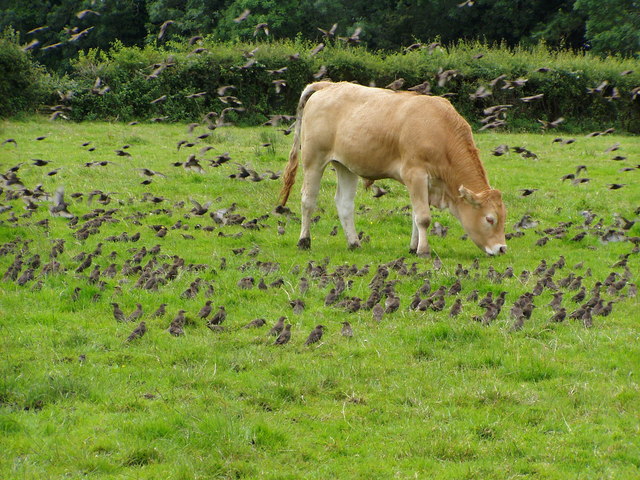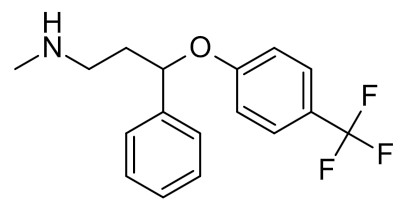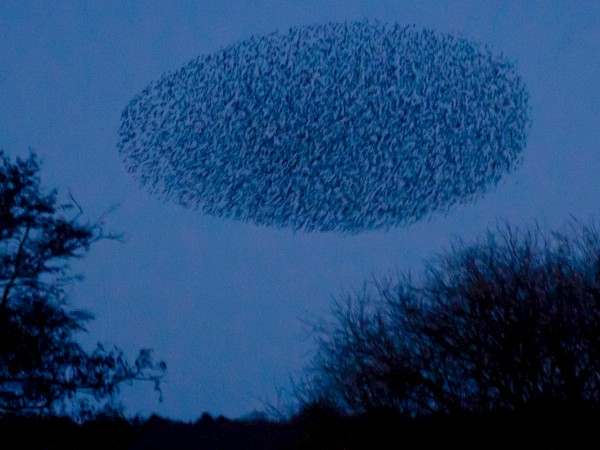Will the medicines you take make their way back into your food? They might, especially of you take your cue from an old Yorkshire song which deals with human recycling in the food chain, via worms and ducks. Now, research [1] from the university of York (where else?) has studied one step of this process in detail.
When we (so to speak) make a donation to the local authority, along with the usual liquid and solid we may present them with medicines we have taken, or metabolites thereof. These generally end up in a sewage treatment plant. When I was at school, our Ornithological Society would make field trips to Beddington Sewage Farm to observe the wide variety of waterfowl and other birds who regularly dined at that municipal table. (I remember being told that it was one of the first sewage farms ever, and was visited by the French emperor Napoleon the Third.)
 As cities grew, it became more economical to treat wastewater at dedicated plants, and to fertilize fields with the resulting sewage sludge. Whichever method is used, many wildlife species, especially birds, come to forage on sewage-contaminated food. The resultant exposure to human pharmaceuticals for such terrestrial species is still rather limited, though. (I would guess fish have been more extensively studied, and that a mountain of EU legislation regarding the concentrations of such chemicals in rivers and domestic water supplies is already in place.)
As cities grew, it became more economical to treat wastewater at dedicated plants, and to fertilize fields with the resulting sewage sludge. Whichever method is used, many wildlife species, especially birds, come to forage on sewage-contaminated food. The resultant exposure to human pharmaceuticals for such terrestrial species is still rather limited, though. (I would guess fish have been more extensively studied, and that a mountain of EU legislation regarding the concentrations of such chemicals in rivers and domestic water supplies is already in place.) Fluoxetine (Prozac)
Fluoxetine (Prozac)
One commonly used antidepressant is fluoxetine, more widely known as Prozac. The authors captured 24 starlings (Sturnus vulgaris) from the wild, and divided them into two groups. One group (FLUOX) was treated with the drug to an amount predicted from estimated and measured concentrations of fluoxetine in worms, which would form a major part of their diet; the other group was left as a control. After a sufficient time for the birds to reach a working level of fluoxetine, pairs, one of each group, were sequentially moved from their group aviaries into individual cages for 2 days, leaving the main groups by and large undisturbed. In regard to behaviour, boldness, exploration and activity levels in the birds showed no treatment effects, but controls and FLUOX birds did show differences in terms of the concentration of metabolites of the stress hormone corticosterone in their faeces. HOWEVER,
When they investigated the movements of birds in their group aviaries, they found evidence that fluoxetine could potentially affect mass balance in starlings through both behavioural and physiological mechanisms. The controls made a higher frequency of visits to food trays than FLUOX birds around the important foraging periods of sunrise and sunset, as is optimal for wintering birds. Although individual variability made interpreting the sub-lethal endpoints measured challenging, the data suggested that fluoxetine at environmentally relevant concentrations can significantly alter behaviour and physiology. And this was even though the environmentally relevant exposure for birds corresponds to only 2.2–6.5% of the human therapeutic dose (when corrected for body mass differences.)
So, individual behaviour appeared unaffected, but group activity showed differences. Now, flocking behaviour is well known as being fundamental to starling existence, and certainly is integral to their success as a species. This behaviour has been modelled mathematically, by a group of researchers largely based in Rome. Flocking of starlings is a problem in that city, with their deposits damaging ancient monuments, and requires costly control. With the recent economic downturn all over the world, the Mediterranean countries have been badly affected, such that Rome drowns in bird droppings as austerity bites.
The mathematical methods used are such that they found it more logical to publish in a physics rather than a biological journal. Here is the abstract:
Collective decision-making in biological systems requires all individuals in the group to go through a behavioural change of state. During this transition fast and robust transfer of information is essential to prevent cohesion loss. The mechanism by which natural groups achieve such robustness, however, is not clear. Here we present an experimental study of starling flocks performing collective turns. We find that information about direction changes propagates across the flock with a linear dispersion law and negligible attenuation, hence minimizing group decoherence. These results contrast starkly with present models of collective motion, which predict diffusive transport of information. Building on spontaneous symmetry breaking and conservation-law arguments, we formulate a theory that correctly reproduces linear and undamped propagation. Essential to this framework is the inclusion of the birds’ behavioural inertia. The theory not only explains the data, but also predicts that information transfer must be faster the stronger the group’s orientational order, a prediction accurately verified by the data. Our results suggest that swift decision-making may be the adaptive drive for the strong behavioural polarization observed in many living groups.
Here the collective effect of individual actions results in a large scale performance. So I wonder, if the drug affects behaviour in a small group, what will it do to whole flocks?

Detail of http://commons.wikimedia.org/wiki/File:Starling_Roost_%286781835682%29.jpg
And if you pasture your ducks on a farm spread with sewage, consider the lyrics (condensed) of that song, known as the “Yorkshire Anthem”:
And if you pasture your ducks on a farm spread with sewage, consider the lyrics (condensed) of that song, known as the “Yorkshire Anthem”:
Lyrics in Yorkshire dialect | Interpretation in Standard English |
Refrain: |
|
And here’s a lovely rendition of the song. It’s sung by Lakeland voices, on the West rather than the East side of England, so their pronunciation is a bit closer to ‘standard’ English as Yorkshire is not their native dialect. But they’re enjoying themselves so much.
Their last line goes “That’s how we get our loved ones back”. That’s one way of maintaining continuity!
Cover Picture: Starling in Toulouse (Wikimedia).
[1] Behavioural and physiological responses of birds to environmentally relevant concentrations of an antidepressant
Bean TG, Boxall ABA, Lane J, Herborn KA, Pietravalle S, Arnold KE. (2014) Phil. Trans. R. Soc. B 369: 20130575.
http://dx.doi.org/10.1098/rstb.2013.0575
[2] Information transfer and behavioural inertia in starling flocks
Alessandro Attanasi, Andrea Cavagna, Lorenzo Del Castello, Irene Giardina, Tomas S. Grigera, Asja Jelić, Stefania Melillo, Leonardo Parisi1, Oliver Pohl, Edward Shen, Massimiliano Viale, (2014) Nature Physics 10, 691–696
http://www.nature.com/nphys/journal/v10/n9/full/nphys3035.html




Comments